A bird with a full, fluffy plumage that helps it survive the harsh winter climates in which it lives.
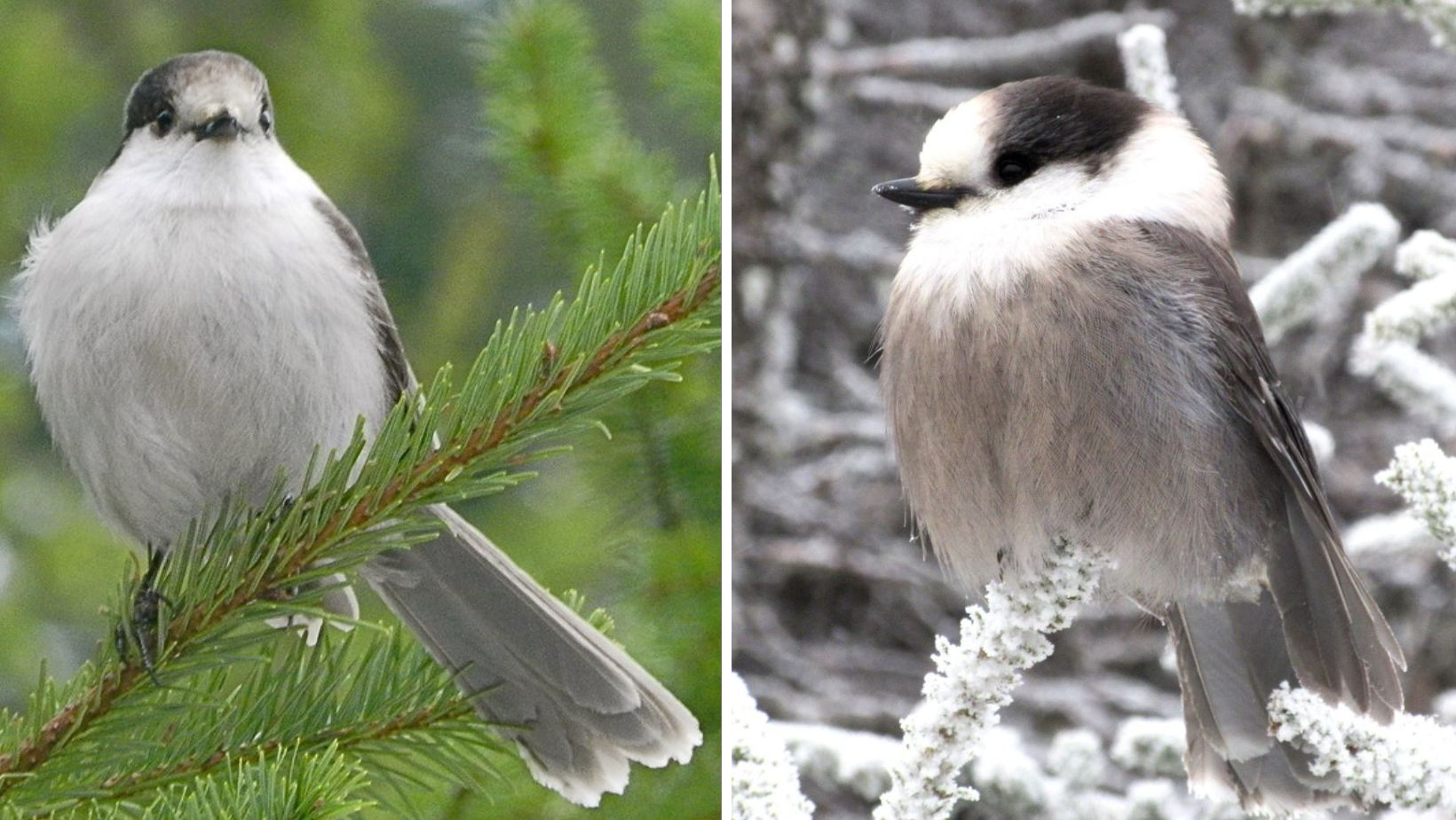
Meet The Gray Jay
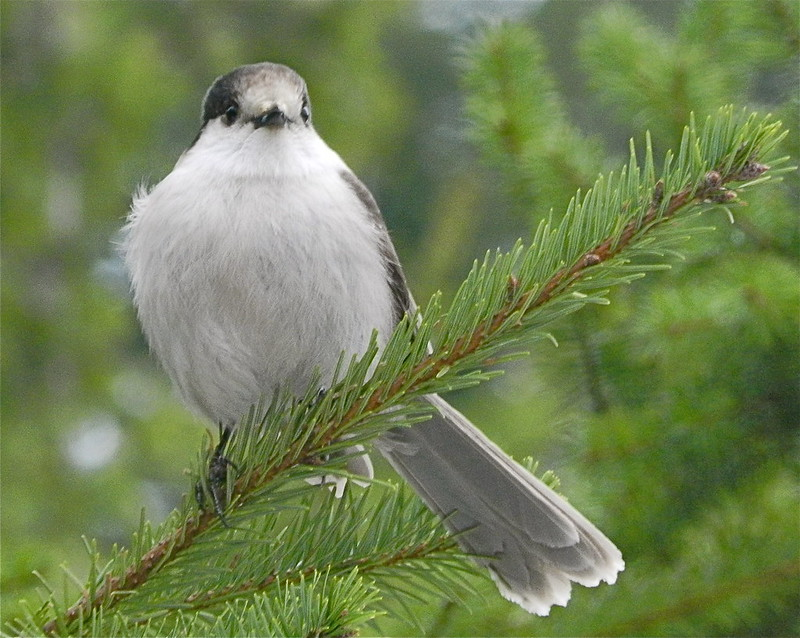
The Gray Jay (Perisoreus canadensis), also Grey Jay, Canada Jay, or Whiskey Jack, are birds that weigh between 62-82 grams. Sexes are similar in size and color, which consists of dark and light gray, black, tan, and white. These short-billed species grow to adults that have black legs and white auriculars, which are the feathers located in the ‘cheek’ area that covers the ear canal. This species resembles common blue jays (Cyanocitta cristata), but gray jays are smaller and darker. Gray jay’s breast (ventral) feathers are short and plentiful. In comparison, their dorsal feathers are very fine towards their heads and smooth on their wings. The smooth texture of their wings allows flight with less energy investment. They are a member of the crow and jay family (Corvidae).
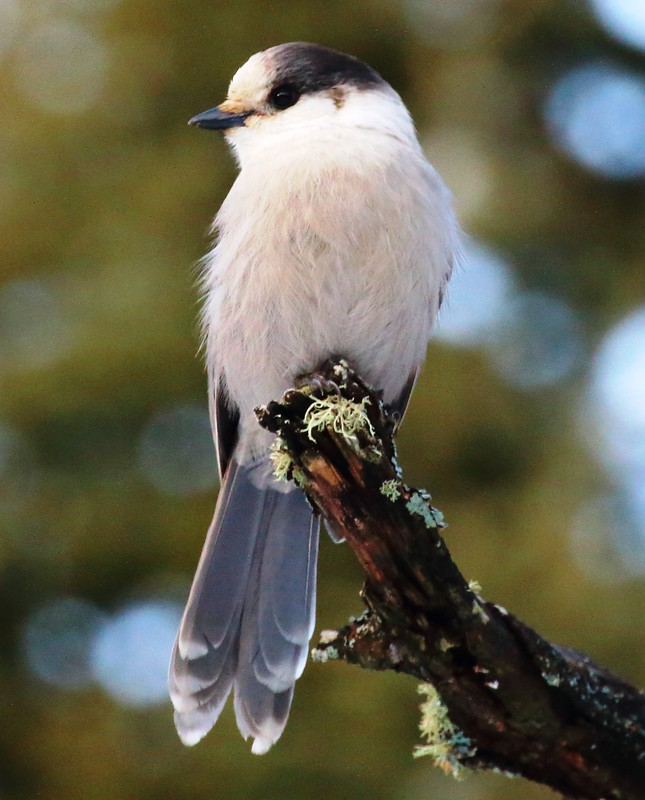
Males are slightly larger than females with juveniles initially colored very dark grey all over, gaining adult plumage after a first molt in July or August.
They are found in the boreal forests across North America north to the tree-line and in subalpine forests of the Rocky Mountains south to New Mexico and Arizona.
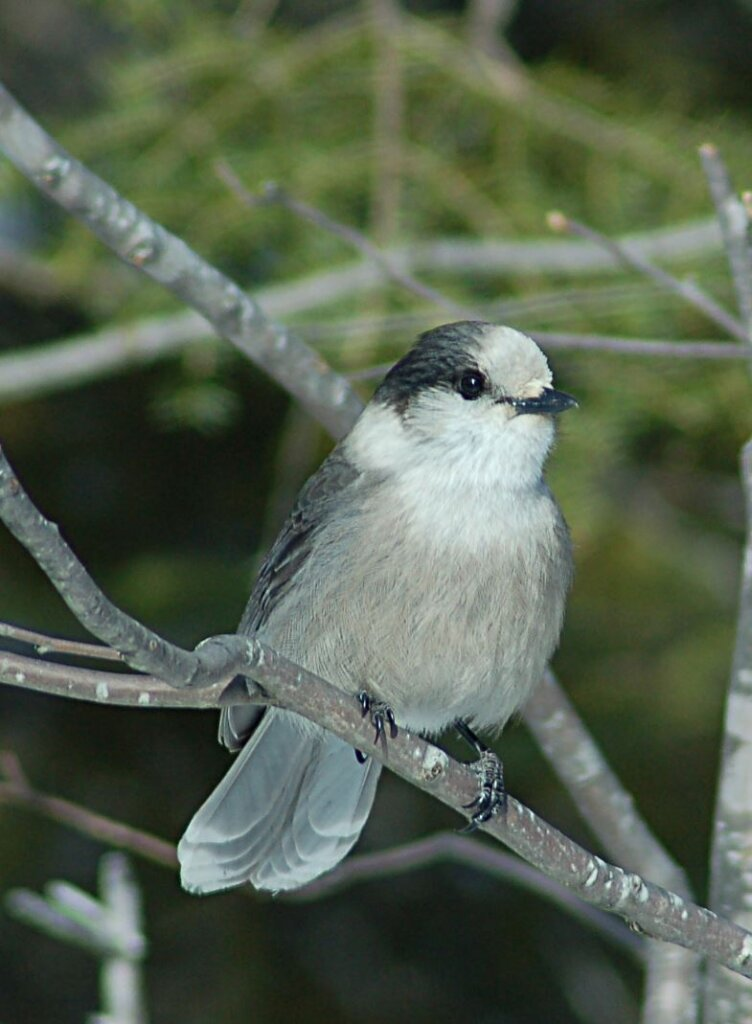
Here they reside in coniferous and deciduous forests, specifically, in spruce (Picea), aspen (Populus), fir (Abies), and sugar maple (Acer saccharum)-dominated forests. Gray jays are dependent on these trees for safety as well as reproduction. Gray jays also thrive around permanent water bodies, from small ponds to the Great Lakes. In the summer, gray jays typically live at elevations from 2,618 m to 3,048 m. In winter, individuals live at lower elevations in the eastern and western United States. Gray jays are not found in elevations below 600 m. At their lowest elevations, gray jays are found in spruce bogs.
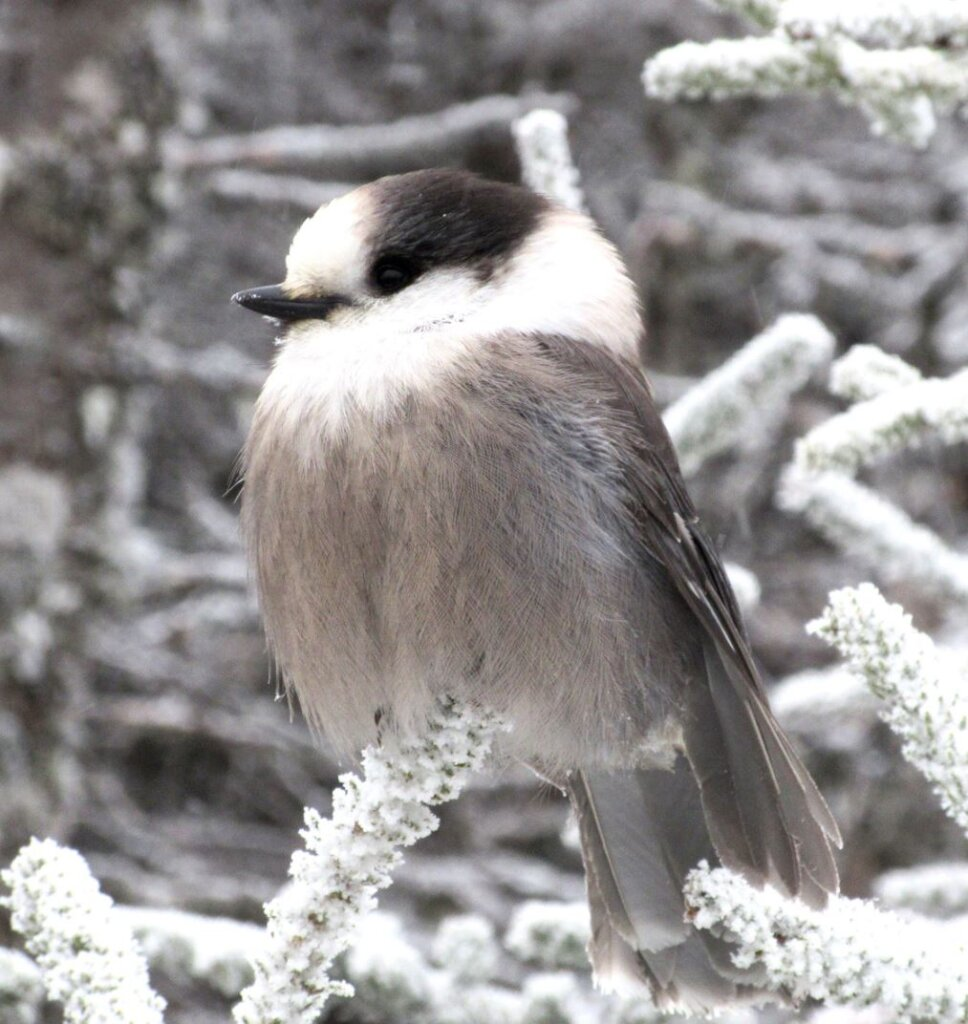
Canada jays are omnivorous. They hunt such prey as arthropods, small mammals including rodents, and nestling birds, and have even been recorded taking a magnolia warbler.
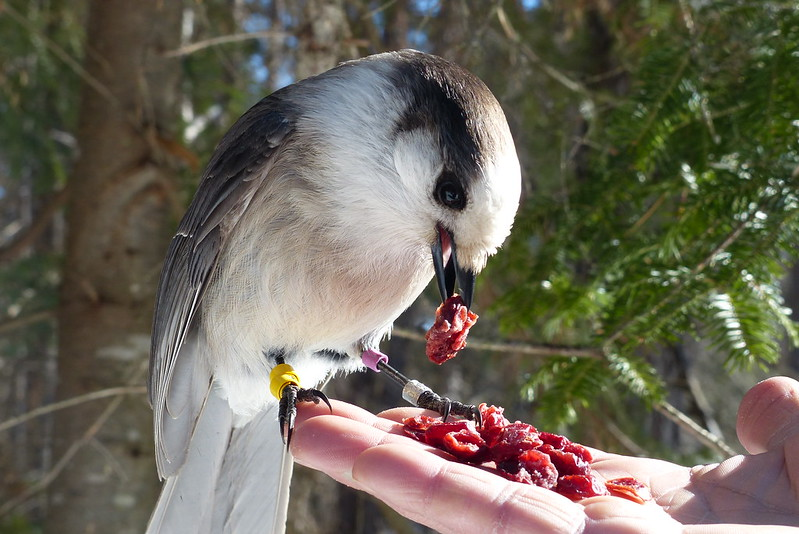
Breeding Canada jays build nests and lay eggs in March or even February when snow is deep in the boreal forest. Male Canada jays choose a nest site in a mature conifer tree; the nests are found most commonly in black spruce, with white spruce and balsam fir (Abies balsamea) also used, in Ontario and Quebec. With the male taking a lead role in construction, nests are constructed with brittle dead twigs pulled off of trees, as well as bark strips and lichens. The cup is just large enough to contain the female and her eggs, measuring about 3 in (76 mm) wide and 2 in (51 mm) deep. Insulation is provided by cocoons of the forest tent caterpillar (Malacosoma disstria) filling the interstitial spaces of the nest, and feathers used to line the cup. Nests are usually built on the southwestern side of a tree for solar warming and are usually less than one nest diameter from the trunk. Nest height is typically 8 to 30 ft (2.4 to 9.1 m) above the ground.
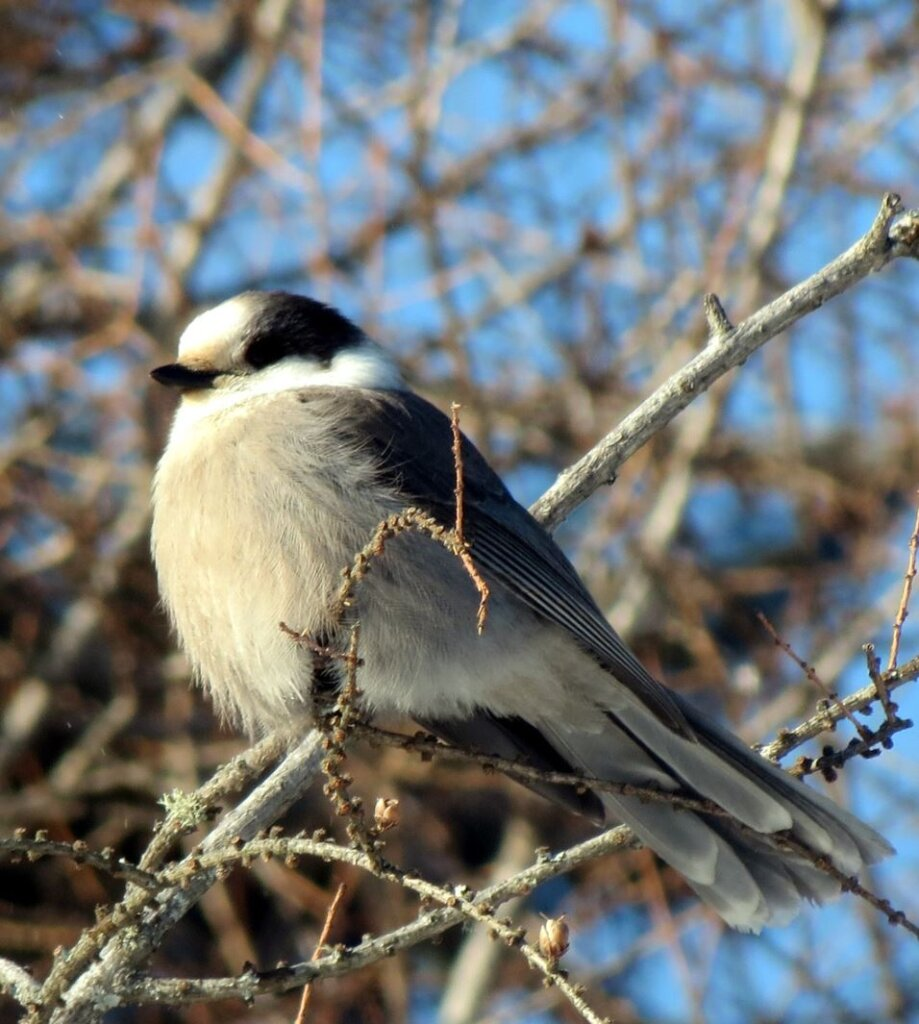
A clutch consists of 2 to 5 light green-grey eggs with darker spots. The mean clutch sizes of Canada jays in Algonquin Provincial Park and La Verendrye Provincial Park were 3.03 and 3.18 eggs, respectively. Incubation is performed only by the female and lasts an average of 18.5 days. The female is fed on the nest by her partner, rarely moving from the nest during incubation and for several days after hatching.
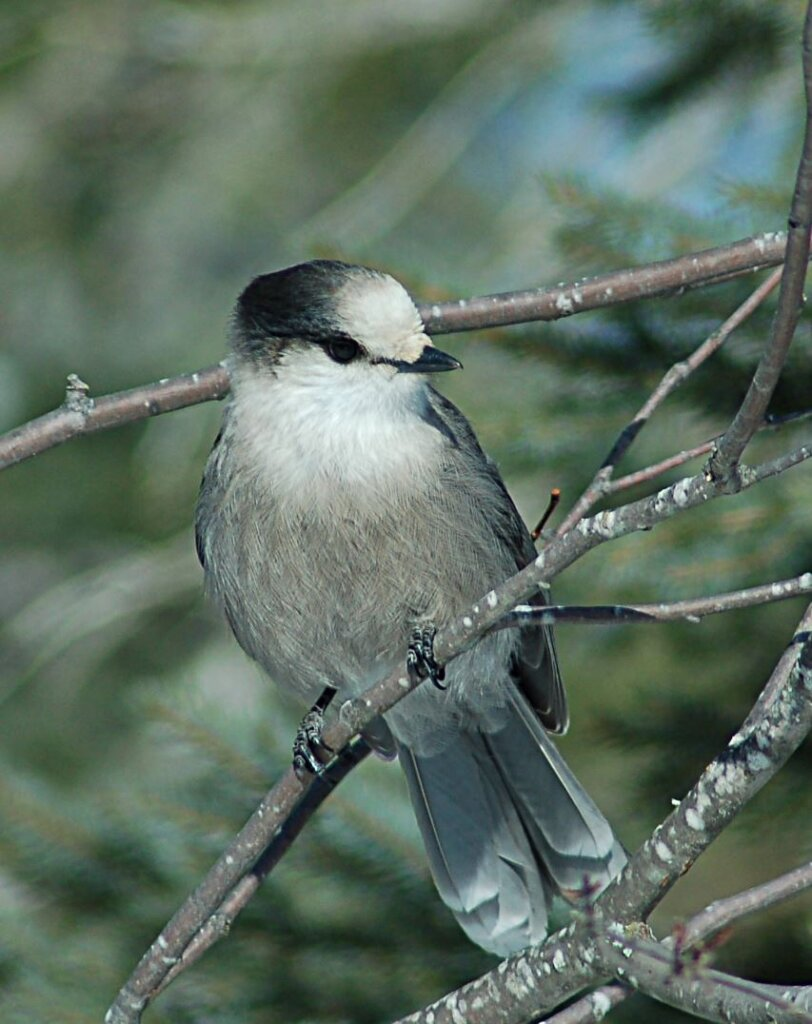
The hatchling’s first molt is completed between April and May and takes two weeks to complete. Although adults in this species are tri-colored, as young they are uniformly dark gray, almost black. Their coloring will resemble that of adults by May to August. Their ventral feathers turn to a lighter brown-cream color and their dorsal feathers turn a dusty gray color. (BirdLife International, 2012; Strickland and Ouellet, 2011; Waite, 1192)
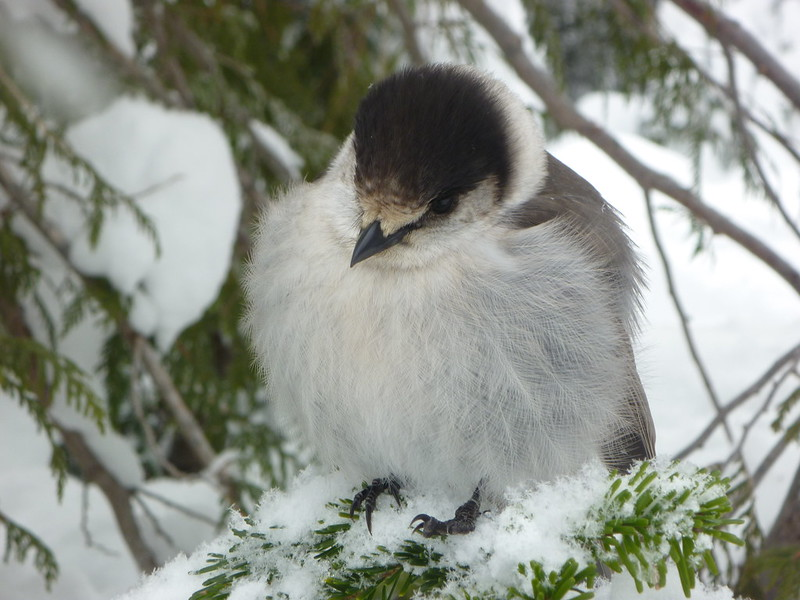
CANADA’S NATIONAL BIRD Perisoreus canadensis was known as the Canada Jay from the 19th century until 1957—when the American Ornithologists’ Union changed the bird’s common name to Gray Jay. The name change was considered a double slight by many Canadian ornithologists and birders: the loss of a national moniker compounded by an Americanized spelling of gray (not grey).
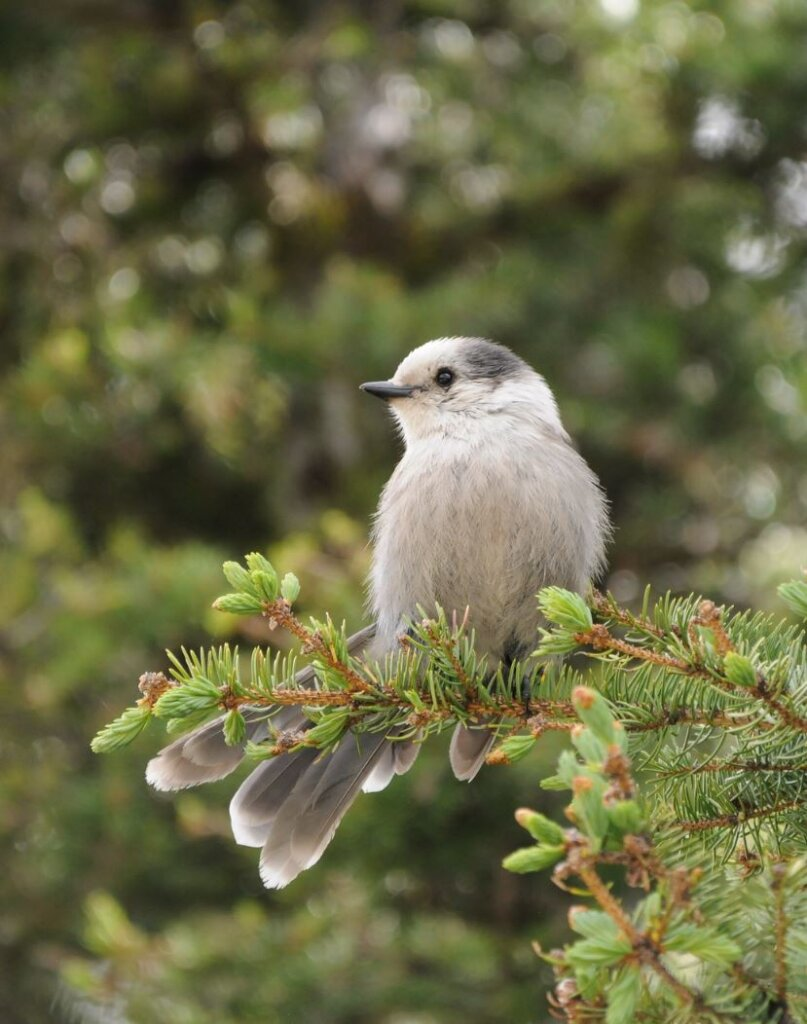
But now, the bird is the Canada Jay again, after a 9-to-1 vote by a committee of the American Ornithological Society (as the AOU is now called) to restore the species’ official common name. Retired Algonquin Provincial Park naturalist Dan Strickland, who has studied the jays in the field for decades and pioneered research into their unique winter survival strategies, made the proposal to the AOS for the name change.
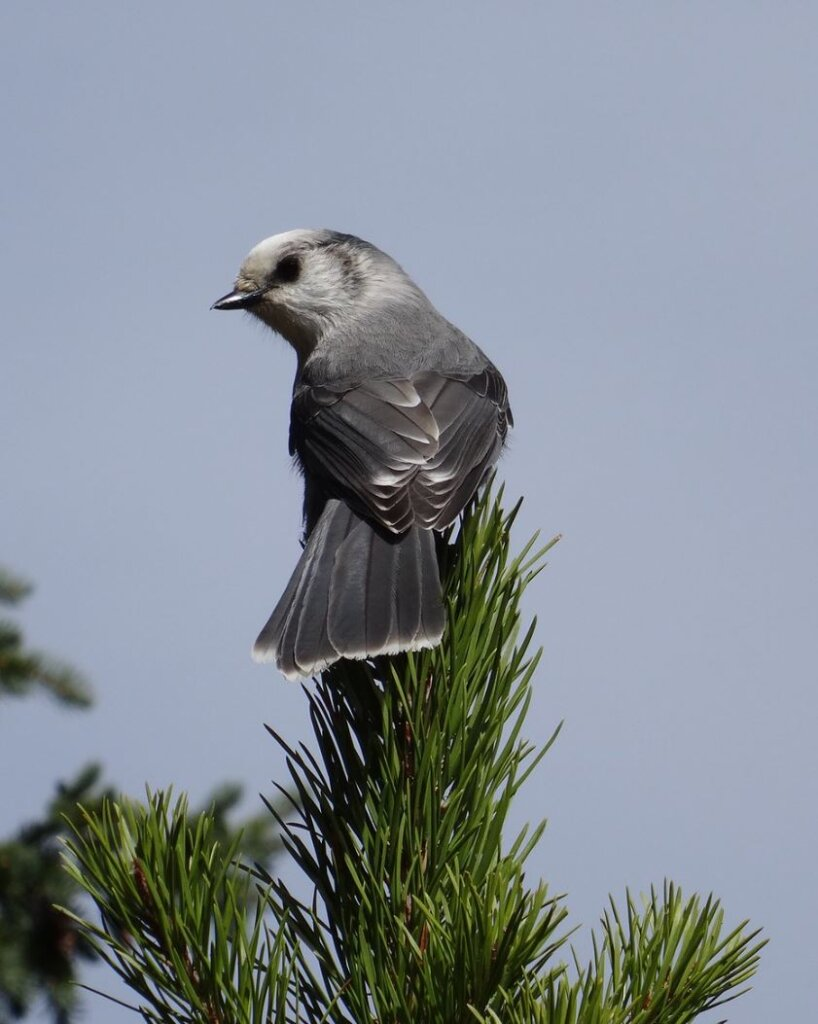
Having a stable population, Gray Jays are classified as of least concern (LC) according to the IUCN Red List.
WATCH A VIDEO ALL ABOUT THE GRAY JAY RIGHT HERE BELOW:

